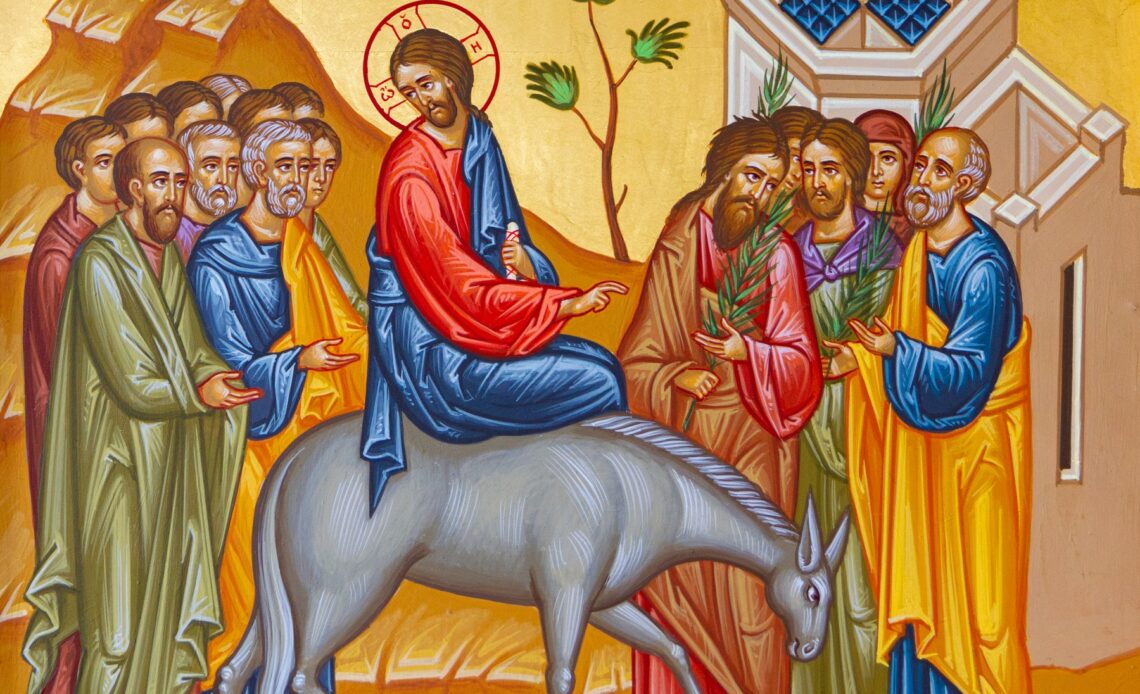Jesus Christ is the greatest leader this world has ever known. No other leader managed to surround himself with 12 ordinary men and completely turn the world upside down. The men that Jesus surrounded himself were a random assortment of fishermen, a tax collector, a religious zealot and more. Yet somehow, Jesus took those 12 men and changed the landscape of the time they lived in and impacted the world thousands of years later. Even more shocking, Jesus didn’t do this by being some sort of domineering leader. Instead, He made Himself a servant to those around Him. The Gospel accounts are full of examples of Christ serving those around Him in a time of need. Make no mistake about it, Jesus embodied servant leadership.
Palm Sunday is one of the greatest examples of Christ’s commitment to servant leadership. While reading about Jesus’ arrival into Jerusalem on Palm Sunday, it’s vital that you remember that He knew exactly what was about to unfold. While the crowds were crying “Hosanna,” Jesus knew that the same crowds would soon be crying “Crucify Him.” While we will look more at that fact in a moment, the fact that Jesus humbly rode into town the week of His crucifixion illustrates His commitment to servant leadership and teaches us that we should approach leadership in the same manner.
An Act of Mercy Before the Triumphant Entry
While Matthew 21 contains one version of Jesus’ entry into Jerusalem, the closing verses of Matthew chapter 20 illustrate His commitment to serving others. Shortly after telling His disciples of His upcoming crucifixion for a third time (Matthew 20:17-19), Jesus encounters two blind men. He could have walked by them, as the crowd that surrounded them told them to be quiet (Matthew 20:31). However, Jesus was so committed to serving those who could never do anything for Him, that He stopped and asked the men what they wanted Him to do for them (Matthew 20:32). The blind men presented their petition to Christ, pleading that their eyes be open.
Matthew 20:34 (ESV)
And Jesus in pity touched their eyes, and immediately they recovered their sight and followed him.
Armed with the knowledge that He was quickly approaching His own death, Jesus was so moved with pity that He stopped to serve two blind beggars who sat on the side of the road. Christ’s ministry showed a constant commitment to serving those who would never be able to repay the favor. Instead, He created followers by serving them and meeting their practical needs.
The Feast of the Passover
Jerusalem would have been bustling on the day that Jesus rode into town. As the Feast of the Passover was about to begin, Jews from all around the country would converge on Jerusalem to take part in the celebration of God’s deliverance of His people from Egyptian slavery. While most of Jesus’ ministry took place in one-on-one situations, Palm Sunday provided Him with a large audience who would understand exactly what was going on.
The Roman Empire was at constant disagreement with the Jews. Roman emperors constantly persecuted those who believed in Jesus as the Messiah, often imprisoning and murdering them for their refusal to worship Roman gods and pledge their allegiance to the Roman government. Because of these persecutions, the Jews were waiting on a Messiah who would come in and overthrow the Romans. Many of them expected the King of the Jews to be a great military leader who would wage war against the Roman government. The crowds that filled Jerusalem for the Feast of Passover did so with the understanding that they could face severe persecution from the Romans, but their faith motivated them to take part anyway.
Why Did Jesus Arrive on a Donkey?
To better understand Jesus’ arrival on a donkey, we have to look back at the prophecy of Zechariah, who ministered to Israel roughly 500 years before Jesus was born.
Zechariah 9:9(ESV)
Rejoice greatly, O daughter of Zion! Shout aloud, O daughter of Jerusalem! Behold, your king is coming to you; righteous and having salvation is he, humble and mounted on a donkey, on a colt, the foal of a donkey.
Five centuries before Jesus was born in Bethlehem, Zechariah prophesied how He would enter into Jerusalem as the Messiah. In order for Christ to be the Messiah, He had to fulfill every Old Testament prophecy, including the arrival on a young donkey. Since devout Jews would know these prophecies, many of the people who may have doubted Jesus’ identity as the promised Messiah, this arrival in front of a multitude of people only served to draw them to believe in Him. Even when He was riding into town to face His own death, He was still committed to the mission of calling unbelievers to repentance.
Additionally, the donkey was symbolic. In ancient times, the way that a king arrived in town illustrated what he was there for. If a king rode into town on a horse, he was there to declare war against the city. Conversely, a king who rode into town on a donkey was there on a peaceful mission. Kings who rode in on a donkey often did so with little fanfare, as they were simply there to negotiate a trade agreement or visit with another king. The donkey was a sign of humility, even among royalty. Now the King of Kings arrived in town riding a donkey, illustrating the fact that He had no interest in overthrowing Rome. Instead, He was on a mission to bring peace to the multitudes.
Jesus Was Unmoved by The Applause of Man
The crowd, realizing that the Man sitting on the donkey was the promised Messiah reacted with glee. They threw their cloaks onto the road and added palm leaves to the path. This was because it was believed that the animal that carried the King should not even have to walk on the dirt. The adoration of the multitude could have moved Jesus. If we’re being honest, it would probably move us. Thousands of people singing your praises and throwing their coats and palm leaves on the road in front of you would definitely have the chance to inflate your ego. However, Jesus was completely unmoved by the applause of men. He was solely focused on His appointment at Calvary.
This fact is illustrated by what Jesus did when he reached the end of the parade route. Instead of going straight to see the king, He went straight to the temple. With thousands of adoring fans behind Him, He could have certainly got into see the royalty of the day. However, Jesus didn’t come to build a fanbase; He came to build a family. He went straight into the temple and threw out the people who had turned it into a “den of thieves” (Mark 11:17). Once things were put in order in the temple, Jesus immediately began healing and teaching, completely unmoved by the crowd.
Why? Why was Jesus not focused on the ones who were crying “Hosanna?” Not only is it because He knew they would soon turn their backs on Him and demand His death, but He also knew that His leadership wasn’t about the applause of man. He came to serve them and to save them, not to lead them into war against the Romans.
Everything that Jesus did on Palm Sunday paints the picture of a servant leader. He didn’t rally the crowd and set up His own kingdom on Earth. Instead, He stuck to God’s plan for fallen humanity, remained unmoved by their applause and saw the need for their salvation. Even in the face of applauding multitudes, Christ remained the embodiment of servant leadership.
A Closing Prayer:
God, I thank you for the leadership that you have entrusted to me. Whether it be in my home, business, church or elsewhere, I’m grateful that You have entrusted me with the responsibility of leading others. I ask that You help me to remain humble and realize that my leadership position is nothing more than a ministry opportunity. Help me to be a servant to those under my leadership, to remain committed to meeting their needs and pointing them towards You and Your mercy. In the name of Jesus I ask these things, Amen!


